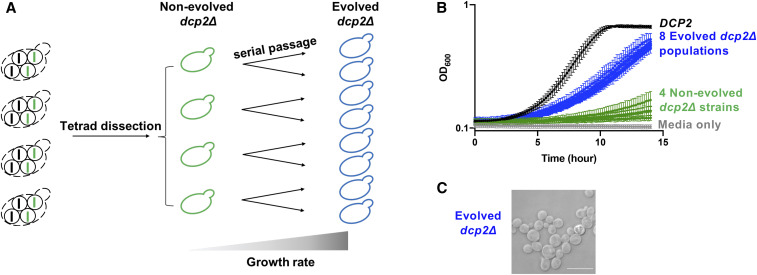Figure 2.
Experimental evolution of dcp2∆ strains results in growth and morphological improvement. (A) Diagram of experimental evolution. Four dcp2∆ strains (middle) isolated from distinct tetrads (left) were subject to serial passage. Two replicate samples of dcp2∆ strains were transferred to new media in iterations until the growth rate increases (right). (B) The dcp2∆ growth defect is partially improved in evolved dcp2∆ populations (blue) compared to nonevolved dcp2∆ strains (green). Cells were grown at 30° and OD600 was measured every 10 min for ∼15 hr. Shown is the average OD600 from replicate cultures and their standard deviations, plotted on a log scale. n = 8 for DCP2, n = 4 for each nonevolved dcp2∆, and n = 2 for each evolved dcp2∆. (C) Morphological defects are partially restored in evolved dcp2∆ populations. A representative microscopic image of an evolved dcp2∆ population is shown. Bar represents 10 µm.

